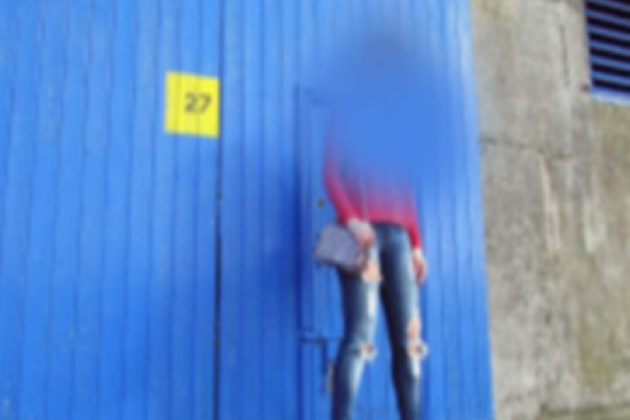Blindsided mid-career
“I’m afraid it’s degenerative and there are no treatments or cures”. Forty minutes after arriving for my appointment at Moorfields Eye Hospital, I was on the way to losing much of my eyesight. And already officially disabled.

I’d gone at the suggestion of my boyfriend to find out why my eyes were aching when I read in dim light, and why colours seemed to be getting a bit muted.
I’d worked in private and public sector communications since my twenties and rarely given much thought to how to communicate with an audience that included disabled people – which I now realise is any audience you care to mention.
Becoming a disabled person in the middle of my comms career was pretty devastating and, nearly ten years on, is still full of daily frustrations.
The greatest is the assumption that independence is not an option. That I need, and presumably have, someone to help me all the time, whether it’s accessing information on screens (is this meeting room booked for me?) or reading signage.
The latter is particularly tricky at present, with so many coronavirus (COVID-19) related instructions everywhere – and don’t get me started on the prevalent use of block capitals, which are very difficult to read as they reduce the difference between letters.
My particular form of sight loss is in the centre of the eye, the part which sees detail (writing, faces, expressions) and colour. It also results in extreme light sensitivity, with its own set of challenges for screen-based activity.

Whited-out text, for example, is painful to read, forcing me to concentrate on the brightest part of the screen. Dark text on a light background, where I’m focused on the dark lines of the letters, is far less painful, especially if the font used has nice thick lines to give a strong contrast with the background.
Acquiring a disability in the middle of one’s life is more common than you might think. I used to assume that most disabled people were “born that way” acquiring coping strategies early in life.
That’s not the case, particularly not with sight issues, which are common in people from their late fifties onwards. Some of us supplement our residual vision with screen reader software, but this is very expensive so many visually impaired people don’t have it, or even know about it – and it’s not a silver bullet. Its functions are pretty basic compared to having sight.
It’s important to make sure all content is screen reader enabled, but that alone does not tick the visually-impaired-audience box, nor does a Braille version as very few visually impaired people read Braille.
The insights (and yes, it is okay to use ‘seeing’ phrases when communicating with blind and visually impaired people) my sight loss have given me have been really useful in my work and in championing this aspect of diversity and inclusion.
Very simple changes – using Arial 12 font as a ‘standard minimum’, for example, can make all the difference in making content clearer to read, while not disadvantaging anyone else.
Reminding colleagues to put both captions and audio on filmed content so that the playing field is level for all our audiences. So much of social media and even TV advertising relies on background music, visual cues and on-screen text. I watch these and remain clueless as to their message.
In this year of inclusion, we’ve been spending a lot of time looking at how to make our communications and the profession itself accessible to a broader range of people, more representative of the public we serve. It’s been illuminating to attend the many events and have our blind spots revealed.
On behalf of those with low vision – which could be any of us as we get older – there are two prejudices that still prevail in parts of the comms industry, and that may hinder our objectives.
One is that accessibility is all about providing alternative formats. They are important and we need to make sure we have them available at the same time as the main communications, or that we can turn them round on demand almost immediately.
Failing to do so only exacerbates the existing inequality and can exclude some from participation if a deadline for action is involved, such as responding to a public consultation or completing an application.
Having to find, or request, an accessible format is already expecting some of our audience to work a bit harder than others. The fact that people do so shows their willingness to engage with us, but many won’t bother. Beware of assuming a lack of demand for alternative formats means your message has landed successfully.
The other prejudice peculiar to some comms practitioners is the sincere, usually unspoken, belief that “accessible” equals “unattractive”, especially in relation to design. There are many talented designers whose work defies that. If the wider public were turned off by plain, easy to read information, there’s one leading website that would not have survived, far less thrived, for many years.
The fact that it’s easy to read and navigate does not hinder its business success. Non visually impaired people don’t seem put off by the fact it’s never going to win design awards. So let’s not assume we need to over-complicate things to encourage engagement.
Of course, mine is only one of many types of sight loss, each having its own characteristics. Then there are other disabled people facing different challenges when it comes to communications, from those with hearing loss to people with dyslexia. This does not make it easy for us to be inclusive in our communications, but I do believe that if the will is there, there are ways we can do more, both within the Government Communication Service and, above all, for our audiences.
- Image credits:
- Royal National Institute of Blind People (RNIB) / www.rnib.org.uk/rnibconnect/how-i-see-stargardt-disease (1)
- Helena Hird (2)
